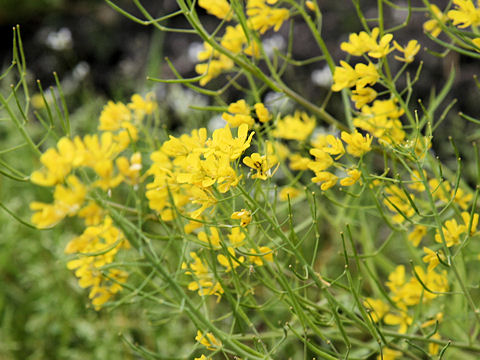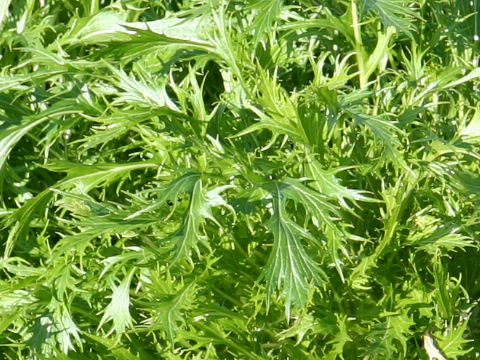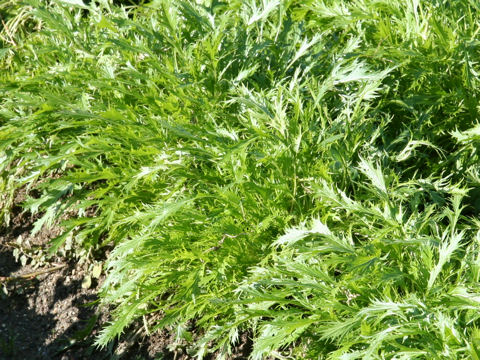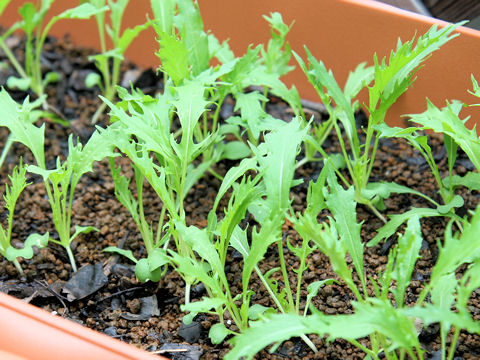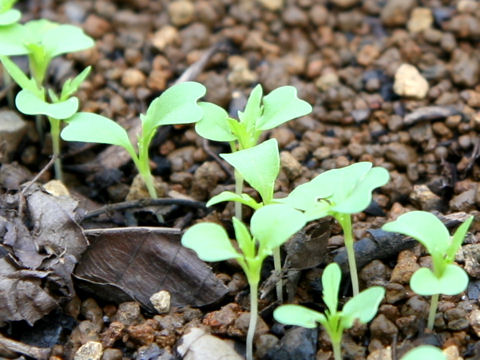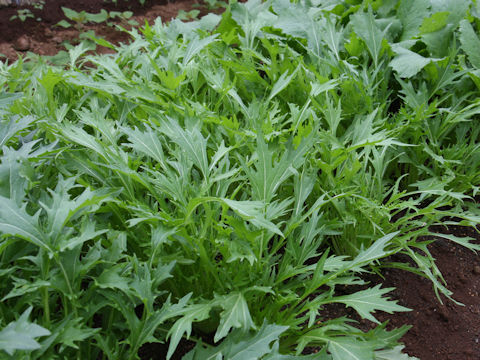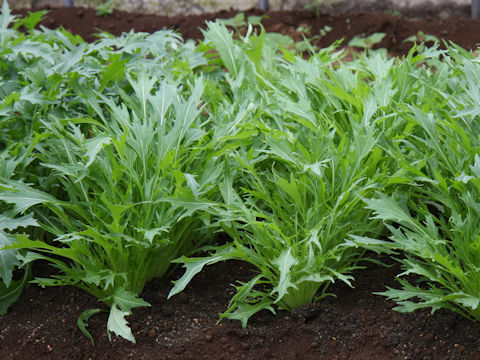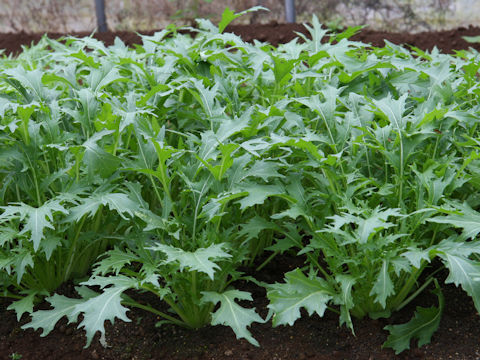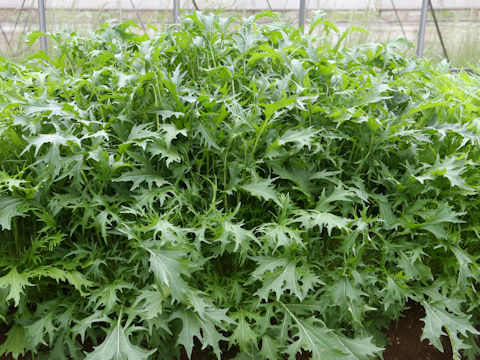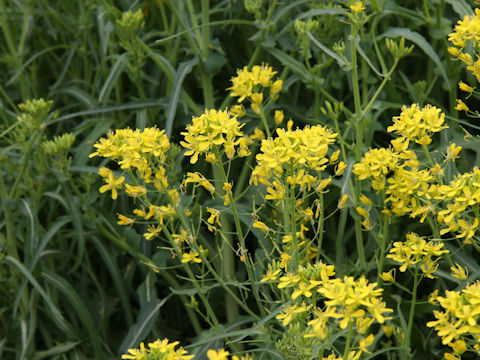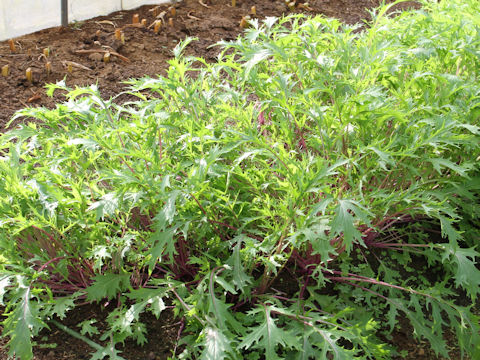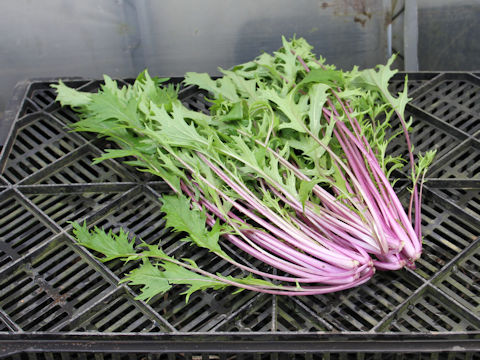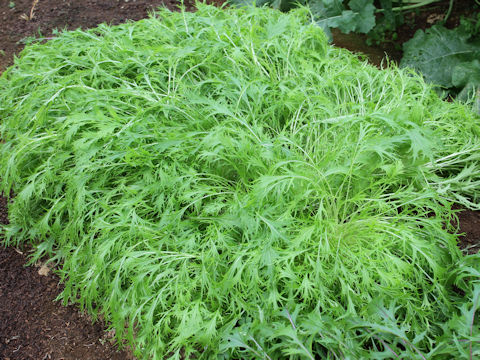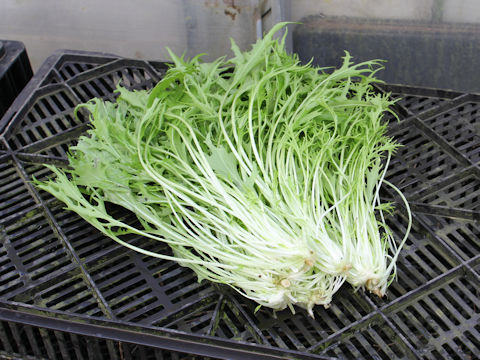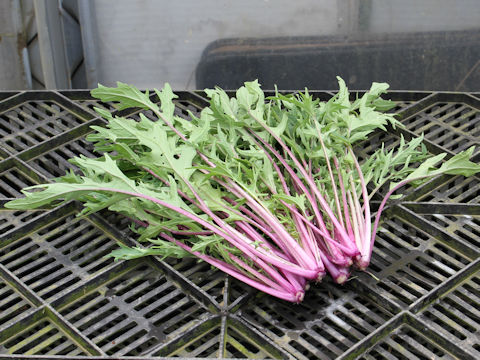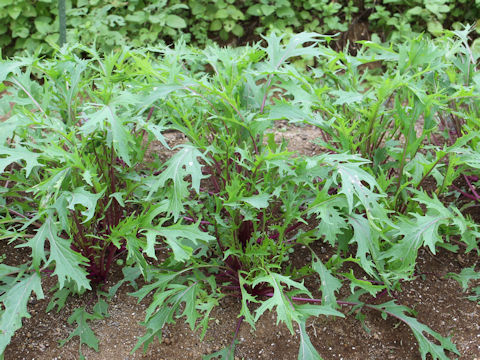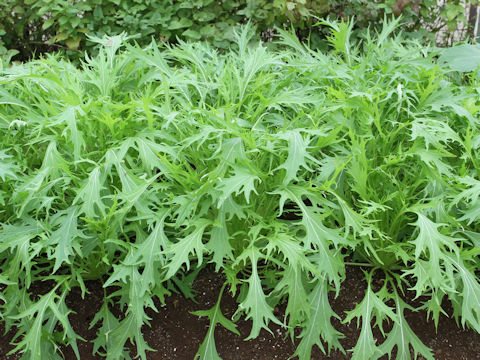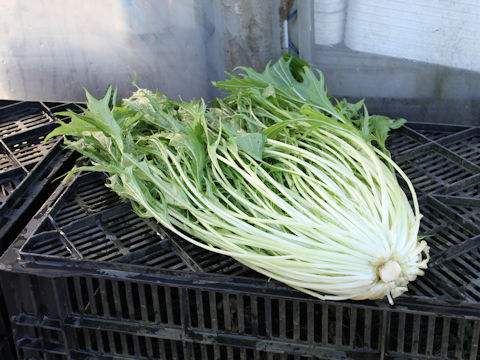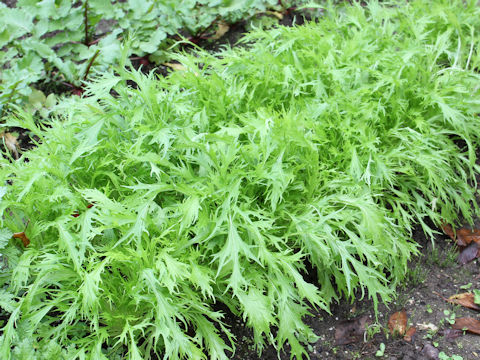
|
|
|
|
−− もっと見る(Show more)−−
−− 閉じる(Close) −−
|
|
|
|
わが国の本州、京都府が原産です。江戸時代の初めから栽培されてきました。茎は細く、よく枝分かれして大株となり、葉は細かく切れ込みます。4月ごろ、「あぶらな」に似た花を咲かせます。「みずな」の和名は、畦の間に水を引き込んで栽培したことから。関東地方では「きょうな(京菜)」と呼ぶそうです。伝統的な品種としては、近畿地方および茨城県を中心として栽培される関西系の品種と、東海地方を中心として栽培される関東系の品種があります。関西系は、葉の切れ込みが深くて葉柄が細く、収穫期にはほとんど株立ちしないのが特徴で、主にサラダ用やハリハリ鍋に利用されます。一方、関東系は、葉の切れ込みが比較的浅くて葉柄が太く、やや株立ちするのが特徴で、専ら加熱調理や漬物に利用されます。 ・写真中6〜中7は、「改良サラダ水菜」(丸種)、 ・中8〜中9は、「晩生千筋京水菜」、 ・中10〜中11、下は、「サラダ水菜」(丸種)、 ・中12〜中13は、「紅葉ちゃん」(野原種苗)、 ・中14〜中15は、「早生はりはり水菜」(丸種)、 ・中16〜中17は、「紅法師」(タキイ種苗)、 ・中18〜中19は、「早生千筋京水菜」、 |
|
|
アブラナ科アブラナ属の一年あるいは二年草で、学名は Brassica rapa var. nipposinica (syn. Brassica rapa var. laciniifolia)。英名はありません。 |
|
|
The "Mizu-na" (Brassica rapa var. nipposinica) belongs to Brassicaceae (the Mustard family). It is an annual or biennial herb that is native to Kyoto Prefecture of Honshu in Japan. This herb has been cultivated there from the early Edo period (1603-1868). It is a tussock and its stems are slender. Leaves are divided into frond. Wild turnip-like flowers are seen in April. The Japanese name "Mizu-na" comes from the fact that it is cultivated by drawing water between the ridges. In the Kanto region, it is called "Kyo-na". The traditional varieties include the Kansai-type, which is mainly grown in the Kinki region and Ibaraki Prefenture, and the Kanto-type, which is mainly grown in the Tokai region. The Kansai type has deep leaf incisions and a thin leaf stalk, and is characterized by the fact that it rarely forms a bushy plant when harvested, and is mainly used for salads and Harihari-nabe. On the other hand, the Kanto type has relatively shallow leaf incisions and a thick leaf stalk, and is characterized by the fact that it forms a bushy plant, and is used exclusively for cooking and pickles. |
|
|
[上] 大阪府枚方市招提元町にて、2007年04月04日撮影。 [中2・中3] 同上にて、2006年12月11日撮影。 [中1] 大阪府四條畷市清滝中町にて、2006年04月12日撮影。 [中4] 同上にて、2007年06月09日撮影。 [中5] 同上にて、2007年05月29日撮影。 [中6〜中8] 千葉県香取市大角にて、2010年04月28日撮影。 [中9] 同上にて、2010年05月12日撮影。 [中10] 同上にて、2011年01月17日撮影。 [中11] 同上にて、2011年03月31日撮影。 [中12・中13] 同上にて、2015年11月17日撮影。 [中14・中15] 同上にて、2015年11月30日撮影。 [中16] 同上にて、2016年04月11日撮影。 [中17・中18] 同上にて、2015年11月09日撮影。 [中19] 同上にて、2016年12月15日撮影。 [下] 山形県小国町小玉川にて2018年10月28日撮影。 |

|
|
Shu Suehiro |
